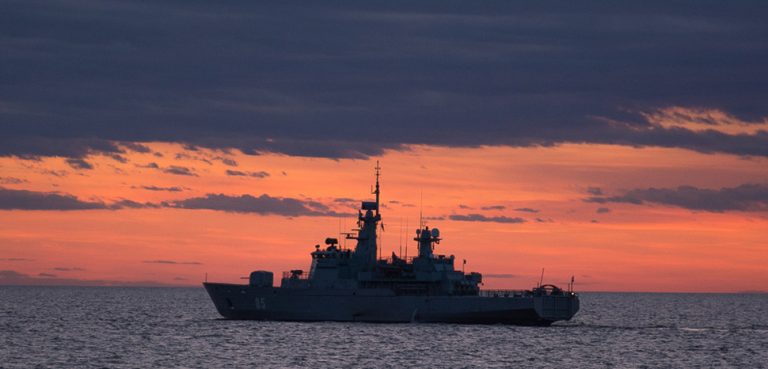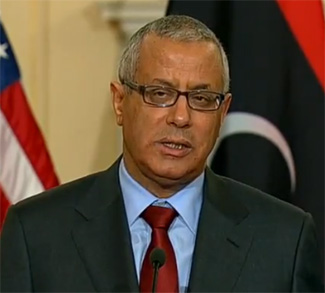At the 53rd Pacific Islands Forum Leaders Meeting in Tonga last week, representatives from Washington, Beijing, and Taipei were engaged in yet another geopolitical slugfest for geopolitical gains. While the U.S. succeeded in enrolling Guam and American Samoa as the associate members of the Pacific Islands Forum (PIF), China’s proxy efforts to oust Taiwan as PIF’s development partner only met with apprehension and lack of support from the members of the forum. Evidently, the great power rivalry in the Indo-Pacific is heading southwards.
The question thus arises: how does a sub-region accounting for less than one percent of the world’s population and only a small fraction of its overall GDP turn into one of the prominent hotbeds of geopolitical competition in the 21st century? In order to gauge the region’s potential to influence the outcome of this great power rivalry, it is essential to read its significance in the context of historical realities of world politics.
A Brief History of the Pacific Islands Forum
During the closing years of the Second World War, soon after the Japanese imperial rule over Papua New Guinea and Solomon Islands was ended, the metropolitan states in the South Pacific – Australia and New Zealand – began efforts to create an order in the region to best suit their security interests. Consequently, the South Pacific Commission (SPC) was set up in 1947. However, the mandate of the SPC was restricted only to the concerns of the economic and social development of the Pacific Island Countries (PICs), and it was not able to deliberate or decide on matters of ‘high politics.’ This circumscribed mandate of the SPC was due to the fact that the colonial powers of the region, which included the U.S., France, Britain and Netherlands, were apprehensive of a regional grouping whose decisions could impact their colonies in the South Pacific.
The interest of the leading powers of the Western bloc seemed to be dominant at home, Europe, Indo-Pacific, and elsewhere at the time. The South Pacific was governed as a colonial outpost; its significance limited to serving the Western colonial interests only. However, with the rise in anti-colonial sentiment in the region and its support by the Australian government, the island countries started looking outward for economic assistance by the end of 1960s. Tonga was the first Pacific island country to establish diplomatic relations with USSR in 1975. This made U.S. and others to acknowledge the increasing risk of Soviet expansion in the South Pacific. In addition, the leaders of Pacific island countries were becoming increasingly vocal in demanding autonomy and independence in setting the security agenda for the region. Resultantly, a new format for regional cooperation and defense was envisaged with the establishment of the South Pacific Forum (SPF) in 1971, which was renamed the Pacific Islands Forum (PIF) in 2000. The SPF played the crucial role of creating the security consensus amongst the island territories. Australia, under the prime ministership of Malcom Faser, successfully pursued the policy of ‘strategic denial‘ through the SPF to completely block any and all Soviet efforts at expansion in the region. The collective security pact between U.S., Australia and New Zealand – the ANZUS Treaty of 1951 – also played a role in the containment policy of the Washington.
However, unlike the South Pacific Commission (SPC), the membership of the SPF was limited to Pacific island countries, Australia and New Zealand only. Foreign great powers were made ineligible for membership in SPF following a campaign for autonomous regional and national political strategy by the newly independent states of Melanesia and the countries of Polynesia. Moreover, the apprehensions regarding the immediate damage and fallout of the nuclear testing by U.S. and France in their colonial territories in the South Pacific further created an environment of animosity against colonial presence in the region. Australia, New Zealand and island nations launched a campaign to declare the region a nuclear-free zone, which bothered the U.S. as that would ban its nuclear-powered submarines and ships from conducting routine patrols in the region. This was a troublesome prospect for Washington in light of the threat posed by the Soviet expansion. However, as it turned out, the South Pacific Nuclear Free Zone Treaty was enacted in 1985, and Cold War thinking slowly faded by the end of the decade.
The Post-Cold War Regional Context
The end of the Cold War saw the withdrawal of U.S. resources and attention from the region. Australia, too, softened its stance with the promulgation of a more cooperative and non-hegemonic strategy of ‘constructive commitment‘ toward the South Pacific. The island nations’ space for trade and aid cooperation with the emerging economies in Southeast Asia and elsewhere also widened. However, the geographical and historical significance of the region did not completely evade the Washington’s foreign policy strategy. In 1982, the Reagan administration stamped out a free association deal with the three island nations of Marshall Islands, Micronesia, and Palau. Under these agreements, U.S. promised financial aid and working and citizenship privileges to the citizens of the associated nations, in return for military access to their land, airspace, and sea. These agreements are called the Compact of Free Association (COFA), and they placed U.S. at the center stage of the future geopolitics of the region.
Recent Developments in the South Pacific
It is in light of these historical realities that we will now attempt to make sense of how recent events in the South Pacific can determine to an extent the outcome of contemporary great power rivalry. The 53rd Pacific Islands Forum Leaders Meeting in Nuku’alofa concluded with two important outcomes for the regional geopolitics. One, the island states signed a security pact with Canberra – one similar to what Beijing had tried to sign but failed in the past. The deal is a regional policing agreement that will bolster Australia’s security presence in the region. Two, Beijing protested and a paragraph from forum’s final communique was deleted for implying that Taiwan was an independent and equal country.
The diplomatic battles and of the 53rd Forum are indicative of a trend of growing geopolitical rivalry in the South Pacific. The renewal of COFA agreements by U.S. the last year, China’s security pact with Solomon Islands, Australia’s admission to trilateral nuclear partnership AUKUS – they all hint at the revival of the Cold War thinking in the region.
Australia’s diplomatic and security posture in South Pacific has also evolved. Canberra, until the end of the last decade, pursued a policy of ‘strategic hedging,’ through which it sought to maintain a balance between its security partnership with the United States and its economic ties with China. Now, Washington seeks to counterbalance Beijing and, as during the period of the Cold War, Australia is strongly allying with the United States to build a security order in the Indo-Pacific that hopes to contain China. Beijing, however, attributes Washington’s animosity toward its Pacific ambitions to American exceptionalism and the China threat theory, which speaks to alleged ethnic and racial biases undercutting the West’s policy of containment.
In recent years, several countries in the region have conceded to the One China principle, with Nauru being the latest to make the diplomatic switch from Taipei to Beijing. Today, there are only three Pacific island countries that maintain formal relations with Taiwan: Marshall Islands, Palau, and Tuvalu. This gives China diplomatic leverage over Taiwan, and by extension the U.S., in international forums. China’s no-engagement policy toward the countries that have diplomatic relations with Taiwan places them outside of potentially lucrative Belt and Road Initiative (BRI) investments. The challenges faced by these developing countries often require them to meet external powers like China at least halfway. Hence, Beijing has become an important stakeholder in multiple sectors in many Pacific island countries, including in the mining, agriculture, construction, fisheries, and infrastructure sectors.
In the near future, China may face several roadblocks in the region due to its economic position at home. Since 2016, Chinese investment in the region has declined. Furthermore, China’s role in the South Pacific will mostly remain revisionist, limited to disrupting the existing order instead of creating a new one. This is due to the fact that the U.S. commands significant traditional and soft power dividend in the South Pacific for a variety of reasons, including: its strong security presence via territories in Guam and American Samoa, and the COFA agreements; its long-standing tradition of public diplomacy, which includes granting easy access to work and residence to citizens of its three COFA partner countries; and the self-enforcing legitimacy of the principles of liberal world order America stands for.
However, Washington faces a unique set of challenges, too. These range from the issue of nuclear justice (in case of Marshall Islands) to the rise of a great sense of indigenous and regional identity amongst the people in former colonies. Domestic politics are also contributing to a changing status quo in the region, whether in the continued displacement and disability from American nuclear tests in Marshall Islands; the violent protests against electoral reforms in the French overseas territory of New Caledonia; or the racial attacks against Asians – particularly directed against the large number of Chinese people living in PNG – Pacific island countries are making their presence felt in the larger scheme of things. Therefore, despite their small geographical size, the countries of the South Pacific are slowly becoming the active creators of the regional political framework in their region.




